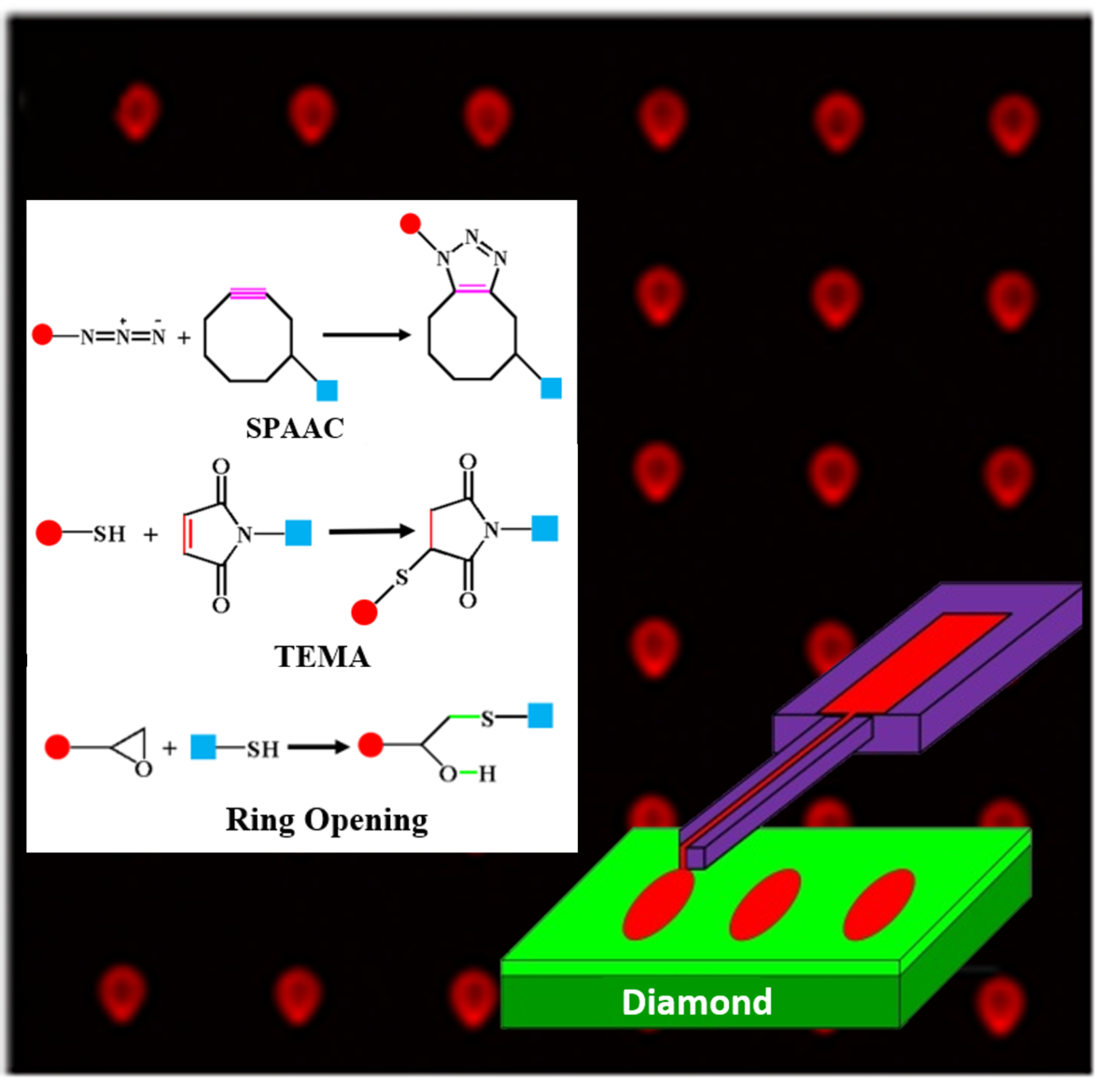
Enhancing Diamond Biosensors and Photonic Devices: The Interplay of Surface Roughness, Functionalization, and Fluorescence
-
Author:
S. M. M. Dadfar, S. Sekula-Neuner, M. Hirtz
-
Source:
Adv. Mater. Interfaces (2025)
- Date: 2025
-
Diamond holds exceptional promise in biosensing and quantum applications due to its unique physical, chemical, and electronic properties. This work addresses two critical aspects of diamond material utilization: surface functionalization for biosensors and surface roughness effects on fluorescence. First, this study introduces a novel biosensor approach, preparing oxygen-terminated diamond surfaces with controlled roughness (4 and 14 nm) and functionalizing them via esterification and silanization to generate DBCO-, thiol-, and epoxy-terminated surfaces. These are used to immobilize microarrays of fluorescent and non-fluorescent inks through click chemistry. Optimal click reaction strategies are identified for streptavidin detection, demonstrating a stable and sensitive biointerface. Second, the influence of surface roughness are investigated on fluorescence intensity, revealing that smoother surfaces (4 nm) exhibit significantly enhanced fluorescence compared to rougher surfaces (14 nm). This enhancement is attributed to reduced light scattering and defect density. This integrated approach advances diamond-based technologies by optimizing surface properties for both biosensing and photonic applications.
